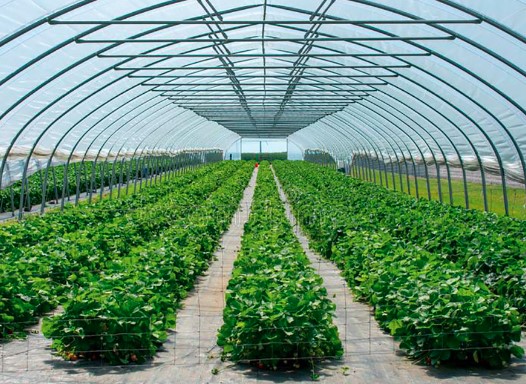Introduction
Sustainability has become a key focus in the agriculture industry, including protected cultivation, as growers strive to minimize environmental impact, conserve natural resources, and ensure the long-term viability of their operations. In this blog, we’ll explore some of the sustainable practices being adopted in protected cultivation and their benefits for growers and the environment.
Use of Renewable Energy Sources
One of the primary sustainable practices in protected cultivation is the adoption of renewable energy sources such as solar power, wind power, and biomass energy. Solar panels installed on greenhouse roofs can harness sunlight to generate electricity, reducing reliance on grid power and lowering greenhouse gas emissions. Similarly, wind turbines and biomass boilers can provide clean and renewable energy for heating, cooling, and powering greenhouse operations.
Water Conservation and Recycling
Water conservation and recycling play a crucial role in sustainable protected cultivation. Growers implement water-efficient irrigation systems such as drip irrigation and micro-sprinklers to minimize water usage and ensure precise delivery to plant roots. Additionally, water recycling systems capture and treat runoff and condensation from greenhouses, allowing growers to reuse water for irrigation, reducing freshwater consumption and minimizing nutrient leaching.
Click Here-To Know More about Protected Cultivation Market
Integrated Pest Management (IPM)
Integrated Pest Management (IPM) practices focus on minimizing reliance on chemical pesticides and promoting natural pest control methods to manage pests and diseases in protected cultivation. IPM strategies include the use of biological controls such as beneficial insects, trap crops, and pheromone traps to suppress pest populations and maintain a healthy balance in the ecosystem. By reducing pesticide usage, growers can protect beneficial insects, minimize chemical residues in crops, and preserve biodiversity.
Soil Health Management
Maintaining soil health is essential for sustainable protected cultivation. Growers adopt practices such as crop rotation, cover cropping, and organic soil amendments to improve soil structure, fertility, and microbial activity. These practices enhance nutrient cycling, water retention, and disease suppression, resulting in healthier plants and higher yields. Additionally, soil conservation techniques such as mulching and no-till farming help prevent erosion, conserve soil moisture, and reduce soil compaction.
Waste Reduction and Recycling
Reducing waste and promoting recycling are integral components of sustainable protected cultivation. Growers implement strategies to minimize packaging waste, such as using biodegradable materials and reusable containers. Additionally, organic waste generated from crop residues and pruning materials can be composted to produce nutrient-rich soil amendments for use in greenhouse production. Recycling programs for plastics, cardboard, and other materials further reduce the environmental footprint of protected cultivation operations.
Conclusion
Sustainable practices in protected cultivation are essential for promoting environmental stewardship, ensuring resource efficiency, and supporting long-term agricultural viability. By embracing renewable energy sources, water conservation and recycling, integrated pest management, soil health management, and waste reduction and recycling, growers can minimize their environmental impact while maintaining productivity and profitability. As the importance of sustainability continues to grow in agriculture, adopting these practices will be crucial for the future success of protected cultivation operations.

